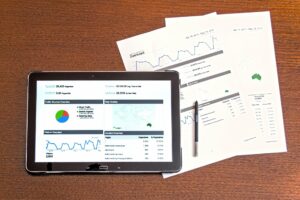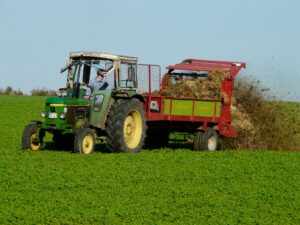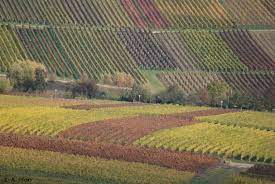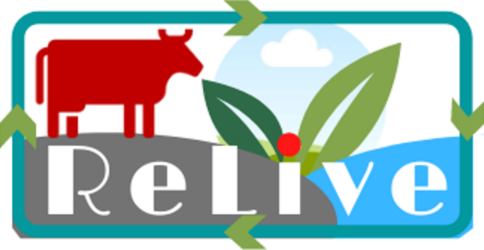WORKPLAN
WP 1: Data Collection and Synthesis (Leader: Germany)
 The aim of this WP is to collect farm data and maintain it in a safe data repository. The objectives are to a) collect a range of project-related harmonized and anonymized farm-level data sets that can be easily accessed and utilized beyond the lifetime of the project and will include crop, soil, livestock, climate and earth observations data from pilot/demonstration farms and other sources. Importantly, it will receive information on long standing mixed farming systems collated from information available in Chile, Uruguay and Argentina through our Chilean partner. It will take advantage of a current data repository set up as part of the ERANet/ ERA-Gas project, GHG-Manage and will be synchronized with other relevant EU databases; b) provide a focus on the information needed for model inputs to run models and algorithms for their development, including LCA and Holos models, and decision support tools, as well as national greenhouse gas (GHG) emission factors, and LULUCF reporting requirements; and c) facilitate the reporting of on-farm information using a cloud-based application and associated data acquisition and storage options. WP1 will provide data for a range of project activities and be an integral part of the work required for all the other WPs (2-8).
The aim of this WP is to collect farm data and maintain it in a safe data repository. The objectives are to a) collect a range of project-related harmonized and anonymized farm-level data sets that can be easily accessed and utilized beyond the lifetime of the project and will include crop, soil, livestock, climate and earth observations data from pilot/demonstration farms and other sources. Importantly, it will receive information on long standing mixed farming systems collated from information available in Chile, Uruguay and Argentina through our Chilean partner. It will take advantage of a current data repository set up as part of the ERANet/ ERA-Gas project, GHG-Manage and will be synchronized with other relevant EU databases; b) provide a focus on the information needed for model inputs to run models and algorithms for their development, including LCA and Holos models, and decision support tools, as well as national greenhouse gas (GHG) emission factors, and LULUCF reporting requirements; and c) facilitate the reporting of on-farm information using a cloud-based application and associated data acquisition and storage options. WP1 will provide data for a range of project activities and be an integral part of the work required for all the other WPs (2-8).
Task 1.1: A literature review of modeling data requirements and LULUCF connection (Task leader DE, FI and FR): Month 01 –12.
Task 1.2: Provision of digitally utomized field and farm data collections, including remote sensing NDVI data (Task leader FI and EE): Month 01–24.
Task 1.3: Development and maintenance of a farm and observation network, data repository, management plan, and anonymization (Task leader FI and DE)-: Month 12 – 24.
WP 2: Livestock Management and Choice (Leader: Spain)
 The methodologies involve the application of response functions (RF) for (i) animal diet and related enteric CH4 and C/N excreta (RF1), developed from the CH4 databases and ongoing projects (ERA-GAS-Ceders, Nozière et al., 2018) and for (ii) soil C sequestration potential and field N cycle components (i.e., N2O, NH3, and N2-fixation) for crop- and grass fields (RF2) under different management practices, developed from 1km2 model simulations over France within the French 4p1000 (Pellerin et al., 2019). For this, two process-based ecosystem models for grasslands (PaSim) and cropland (STICS), combined with national soil and climate data, and agricultural statistics for dominant management practices (see Launay et al., 2020) will be used. RF1s, allows us to estimate CH4 and C/N of excreta for different animal types, feeding levels, forage qualities (N, cellulose; lignin non-digestible organic matter), and diets including tannin content (see Eugène et al., 2019). RF2s (C sequestration potential), are assembled into a user-friendly tool (named CarSoEl), and allow a large array of soil-climate-management combinations to be parametrized by the user (e.g., grazing intensity, livestock types, mowing intensity, crop rotation, crop diversity, cover crops, legume crops, mineral/organic fertilization types).
The methodologies involve the application of response functions (RF) for (i) animal diet and related enteric CH4 and C/N excreta (RF1), developed from the CH4 databases and ongoing projects (ERA-GAS-Ceders, Nozière et al., 2018) and for (ii) soil C sequestration potential and field N cycle components (i.e., N2O, NH3, and N2-fixation) for crop- and grass fields (RF2) under different management practices, developed from 1km2 model simulations over France within the French 4p1000 (Pellerin et al., 2019). For this, two process-based ecosystem models for grasslands (PaSim) and cropland (STICS), combined with national soil and climate data, and agricultural statistics for dominant management practices (see Launay et al., 2020) will be used. RF1s, allows us to estimate CH4 and C/N of excreta for different animal types, feeding levels, forage qualities (N, cellulose; lignin non-digestible organic matter), and diets including tannin content (see Eugène et al., 2019). RF2s (C sequestration potential), are assembled into a user-friendly tool (named CarSoEl), and allow a large array of soil-climate-management combinations to be parametrized by the user (e.g., grazing intensity, livestock types, mowing intensity, crop rotation, crop diversity, cover crops, legume crops, mineral/organic fertilization types).
This WP will therefore analyze the effects of (re)integration of livestock and circularity on farm GHG emissions, focusing on the effect of dietary changes associated with different grazing options on (i) soil C sequestration and GHG emissions-related land uses/management changes and field activities, (ii) enteric CH4 emissions, nitrogen (N) excretion, and animal production, when the objective is to optimize the use of different crop rotations and crop types (annual fodder crops, legumes crops, sugar rich crops) as well as how different forages and residues or additives (tannins, crop by-products, seaweeds etc.) impact on enteric CH4 production, N excretion, and field GHG emissions and how this is influenced by adding circularity to grazing management (i.e., fertilization by direct animal excreta, dynamic rotational grazing, crop residue grazing). The WP2 will be carried out in close cooperation with WP1 and the effect of manure management chain modifications (via RF3; WP3.1) on GHG emissions. The results will be evaluated by field measurements in WP4 and linked with WP5 modelling tasks.
Task 2.1: Effects of land use and system changes on animal diet and subsequent CH4 emissions and excreta (Task leader: FR & FIN): Month 3 –18.
Task 2.2: Adding circularity to system changes: grazing management (Task leader: IE and FR): Month 3 – 15.
Task 2.3: Analyzing the GHG balance of integrated crop-livestock systems (Task leader: ES and FR): Month 8– 32.
WP 3: Manure and Amendment Management (Leader: France)
 The methodologies for this WP are based on the application of functional response functions to estimate CH4, N2O and NH3 emissions and C/N solid products (RF3), for the whole manure management chain (from animal->housing->spreading) including animal types (cattle, sheep), manure characteristics, and management types (slurry, solid manure, etc.) and housing options, as well as climate and other variables. Response functions were developed in past and ongoing international projects (e.g., ERA Gas: GHG Manage and ERA Gas: Susan, MELS, GRA-funded DATAMAN) and by collaborations (New Zealand and France) involving two existing databases on manure management emissions (DATAMAN, Beltran et al. 2021; and ELFE; Vigan et al. 2019).
The methodologies for this WP are based on the application of functional response functions to estimate CH4, N2O and NH3 emissions and C/N solid products (RF3), for the whole manure management chain (from animal->housing->spreading) including animal types (cattle, sheep), manure characteristics, and management types (slurry, solid manure, etc.) and housing options, as well as climate and other variables. Response functions were developed in past and ongoing international projects (e.g., ERA Gas: GHG Manage and ERA Gas: Susan, MELS, GRA-funded DATAMAN) and by collaborations (New Zealand and France) involving two existing databases on manure management emissions (DATAMAN, Beltran et al. 2021; and ELFE; Vigan et al. 2019).
This WP aims to analyze the effects of re-integrated crop-livestock farm systems on animal manure, manure management and the share of manure with other organic amendments. This WP will also assess the effect of livestock dietary changes and their optimization (through circularity or land use/management changes) (i) on the mass balance of C and N through the manure management system, (ii) on manure spreading (i.e., C, N, fiber) and soils (SOC and N2O emissions), and (iii) on the share of animal wastes used for fertilization and energy production and related co-products (e.g., digestate, biochar). The WP interacts closely with WP1 and builds on the results of WP2 dealing with possible dietary changes (quantity and quality), animal feed intake, digestibility (i.e., enteric CH4) and the properties of animal wastes (C/N of excreta). This WP will be evaluated and obtain feedback from WP4 field measurements and modelling WP5 (task 5.2, 5.3), as well as WP7 fordeveloping on-farm scenarios and economic analyses.
Task 3.1: Impacts of crop-livestock systems on the manure management chain and associated GHG emissions (Task leader: FR, NL & NZ): Month 6–24.
Task 3.2: Effects of amendment management (Task leader: FR & NZ): Month 6–24.
WP 4: Farming Resources/Choice (Leader: Poland)
 The overall objective is to evaluate the potential of livestock farms to remove GHG through the integrative adoption of different Climate Smart Actions (CSA). CSA will be developed to increase farm fodder autonomy, animal productivity and welfare, whilst minimizing GHG emissions. We will focus primarily on CH4 consumption through atmospheric CH4 oxidation by soil methanotrophic bacteria, evaluating also how selected CSA’s can contribute to the C storage capacity of soils, reduce N2O emissions, and increase farm resilience to climate change. The specific objectives are:
The overall objective is to evaluate the potential of livestock farms to remove GHG through the integrative adoption of different Climate Smart Actions (CSA). CSA will be developed to increase farm fodder autonomy, animal productivity and welfare, whilst minimizing GHG emissions. We will focus primarily on CH4 consumption through atmospheric CH4 oxidation by soil methanotrophic bacteria, evaluating also how selected CSA’s can contribute to the C storage capacity of soils, reduce N2O emissions, and increase farm resilience to climate change. The specific objectives are:
• To design climate-smart livestock farms based on the synergetic integration of multiple uses and management practices identified as valuable for mitigation (carbon neutrality) and adaptation (high ecological and economic resilience) to climate change.
• To develop improved indicators and methods for the assessment of natural carbon sinks (CO2 and CH4) for use on livestock farms.
The WP4 will be based on literature data compiled in WP1, and experimental data and outputs from the response functions (RFs) used in WP2 and WP3. WP4 will provide data to WP5 for the development of Systems-based Decision Support tools, to WP6 for the development of monitoring and verification protocols, and to WP7 for the evaluation of the economic impacts of the adoption of CSA.
Task 4.1: Integrative farming management plan for the mitigation and adaptation to climate change (Task leader: ES & PL): Month 1 – 12.
Task 4.2: Laboratory incubations to simulate potential GHG removal by soils to provide data for model (Task leader: PL and ES): Month 1 – 18.
Task 4.3: Targeted field campaigns to assess CO2 and CH4 fluxes in livestock farms (Task leader: ES & PL): Month 06 – 30.
WP 5: Systems-based Decision Support Tools (Leader: Ireland)
 This WP aims to adopt and implement whole farm modelling approaches for GHG abatement by identifying a combination of land uses and management scenarios optimising circularity. This includes the analysis of benefits, limitations and trade-offs with an emphasis on reintegrating livestock with cropping systems either alone or in combination with agroforestry/afforestation at farm scale. It will support the identification of the requirements for a climate-resilient carbon-neutral farm through enhanced circularity and alternative land use options. The whole farm model (WFM) Holos and the Cool Farm Tool (CFT) will be employed. In cooperation with the developer of Holos, Dr. Roland Kröbel (AAFC/AAC, Canada), the model will be upgraded through replacement of algorithms to fit EU conditions through the literature review of data (WP1) and the use of response functions (WP2-4). Simulations will be carried out using input data compiled as part of WP1, including information and modelling based on information from long-term mixed farms in Chile, Uruguay and Argentina. Circularity optimisations will be linked to WP4 and WP6, including their verification where possible.
This WP aims to adopt and implement whole farm modelling approaches for GHG abatement by identifying a combination of land uses and management scenarios optimising circularity. This includes the analysis of benefits, limitations and trade-offs with an emphasis on reintegrating livestock with cropping systems either alone or in combination with agroforestry/afforestation at farm scale. It will support the identification of the requirements for a climate-resilient carbon-neutral farm through enhanced circularity and alternative land use options. The whole farm model (WFM) Holos and the Cool Farm Tool (CFT) will be employed. In cooperation with the developer of Holos, Dr. Roland Kröbel (AAFC/AAC, Canada), the model will be upgraded through replacement of algorithms to fit EU conditions through the literature review of data (WP1) and the use of response functions (WP2-4). Simulations will be carried out using input data compiled as part of WP1, including information and modelling based on information from long-term mixed farms in Chile, Uruguay and Argentina. Circularity optimisations will be linked to WP4 and WP6, including their verification where possible.
Task 5.1: Upgrading Holos to fit EU conditions and the CFT (Task leader IE & DE): Month 1 – 12.
Task 5.2: Simulation of the whole farms’ total GHGs and C budgets (Task leader IE & DE): Month 13 – 18.
Task 5.3: Identification and evaluation of alternative land use choice and optimal circularity (Task leader IE): Month 19 – 30.
Task 5.4: Assessment of the whole farm models performance using farmers data (Task leader IE & DE): Month 20 – 34.
WP 6: Direct validation and verification of mitigation action (Leader: The Netherlands)
 This work package aims to evaluate innovative, more direct MRV methods for adaptive management in circular farming systems. Any change in crop or management modification that could lead to reduced CH4 emissions and/or reduced GHG emissions, needs to be verified at the farm scale to provide information to the farmer about the best choice(s) to make, and to inform simulation models. Current practice is to rely on sets of simple parameters combined with simple models and broad-scale empirical average emission factors. These are often unsuitable for verifying local-scale, individual actions by land users and farmers, plus, they are based on model simulations. For more tailored approaches, direct validation of mitigation claims, measurement of GHGs at the farm scale needs to be carried out, which requires approaches that can be used over small areas using cheap sensors or the appropriate deployment of conventional instruments, combined with remote sensing and GIS data. This will facilitate and inform national priorities for developing circular agriculture and GHG mitigation, such as implied in, for instance, the Netherlands government priority
This work package aims to evaluate innovative, more direct MRV methods for adaptive management in circular farming systems. Any change in crop or management modification that could lead to reduced CH4 emissions and/or reduced GHG emissions, needs to be verified at the farm scale to provide information to the farmer about the best choice(s) to make, and to inform simulation models. Current practice is to rely on sets of simple parameters combined with simple models and broad-scale empirical average emission factors. These are often unsuitable for verifying local-scale, individual actions by land users and farmers, plus, they are based on model simulations. For more tailored approaches, direct validation of mitigation claims, measurement of GHGs at the farm scale needs to be carried out, which requires approaches that can be used over small areas using cheap sensors or the appropriate deployment of conventional instruments, combined with remote sensing and GIS data. This will facilitate and inform national priorities for developing circular agriculture and GHG mitigation, such as implied in, for instance, the Netherlands government priority
agenda on innovation in Agriculture, Nature and Food (section 2.2.1.1), but we will use this project as well to put these priorities and tools in a European context. We will evaluate such methodologies for suitability to be incorporated into reporting tools for use by the farmer, as covered in WP 5, and assess how this approach contributes to adaptive management of farms and GHG mitigation. Data from this work package will flow directly into the data repository structures set up in WP1.
Task 6.1: Direct measurement tools and collection of farm parameters (Task leaders NL, EE & FI): Month 1–24.
Task 6.2: Towards adaptive management (Task Leader NL, FI & EE): Month 12–36.
Task 6.3: focus on specific, small-scale initiatives in circular farming (Task Leaders FI, NL & EE):Month 12–36.
WP 7: Economic Impacts and Certification (Leader: Finland)
 The aim of this work package is to both assess the economic consequences of crop-livestock related circularity and to develop an economic incentive framework to incentivize all aspects of circular farming. The objectives are to (a) develop a Gold Standard methodology evaluating circular activities and to quantify their impact through modeling and monitoring, (b) develop an interface with the farmer advisory services supporting the planning of optimized circular activities, (c) to develop a traceability system for products from farm to fork, (d) develop a framework to quantify the long-term profitability of circular products. WP 7 is interrelated with the WP1 data repository, WP 2-5 analyses, WP6 monitoring and verification, and WP8 dissemination. Flowchart for economic value creation for farmers:
The aim of this work package is to both assess the economic consequences of crop-livestock related circularity and to develop an economic incentive framework to incentivize all aspects of circular farming. The objectives are to (a) develop a Gold Standard methodology evaluating circular activities and to quantify their impact through modeling and monitoring, (b) develop an interface with the farmer advisory services supporting the planning of optimized circular activities, (c) to develop a traceability system for products from farm to fork, (d) develop a framework to quantify the long-term profitability of circular products. WP 7 is interrelated with the WP1 data repository, WP 2-5 analyses, WP6 monitoring and verification, and WP8 dissemination. Flowchart for economic value creation for farmers:
Task 7.1: Gold Standard certification methodology as a basis for financial incentives (Task leader FI, IE and DE): Month 01–18.
Task 7.2: Circular farmer advisory services and Farm to Fork traceability of food products (Task leader FI): Month 01–18.
Task 7.3: Consumer survey and willingness to pay for mixed farm products (Task leader IE, FI and EE): Month 12–24.
Task 7.4: Economic impact of the introduction of different farming systems and management practices on different types of farms (Task leader IE) -: Month 1–36.
WP 8: Dissemination and Communication (Leader: Ireland)
 This WP aims to efficiently transfer the knowledge, technologies and the use and application of the appropriate tools among consortium members for their mutual benefit and also the dissemination of the work done by researchers to stakeholders and end users together with the sustained exploitation of the outputs during and after the end of the project. The approach involves a consideration of the target audience(s) and the settings in which the research findings are to be delivered, ensuring effective communication and interaction with relevant stakeholders and policy makers at national and international levels. This will facilitate the uptake of the research and its inclusion in legislation and decision-making. This WP is directly to linked to the research and other relevant activities across all other WPs (WP1-W7). There are several important dissemination channels that will be exploited, including current and former project partner networks and stakeholder communities, as well as social/professional media, including a designated website linked to publication outputs, and traditional communication activities including radio/TV/podcasts /newspapers/journals. These activities will facilitate transnational knowledge exchange.
This WP aims to efficiently transfer the knowledge, technologies and the use and application of the appropriate tools among consortium members for their mutual benefit and also the dissemination of the work done by researchers to stakeholders and end users together with the sustained exploitation of the outputs during and after the end of the project. The approach involves a consideration of the target audience(s) and the settings in which the research findings are to be delivered, ensuring effective communication and interaction with relevant stakeholders and policy makers at national and international levels. This will facilitate the uptake of the research and its inclusion in legislation and decision-making. This WP is directly to linked to the research and other relevant activities across all other WPs (WP1-W7). There are several important dissemination channels that will be exploited, including current and former project partner networks and stakeholder communities, as well as social/professional media, including a designated website linked to publication outputs, and traditional communication activities including radio/TV/podcasts /newspapers/journals. These activities will facilitate transnational knowledge exchange.
Task 8.1: Project Management (IE in association with all partners): Month 01– 36.
Task 8.2: Dissemination and exploitation (IE in association with all partners): Month 01–36.
Task 8.3: Communication activities (IE in association with all partners): Month 01–36.
